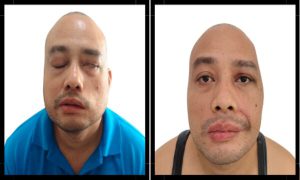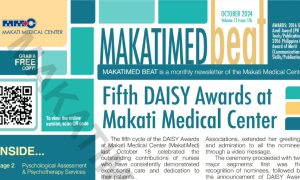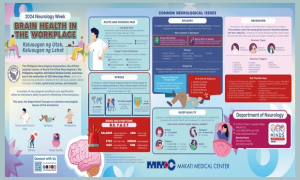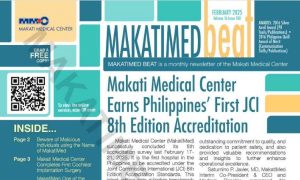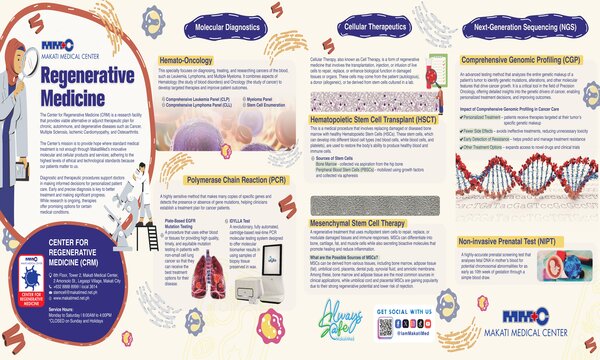
Breastfeeding is linked to several health benefits for children as they grow up. It gives babies a healthy start in life, provides the necessary nutrients they need, and has been linked to mitigating the risks of kidney infections, allergies, diabetes, and heart disease.
To reduce the chances of infants developing health issues later in life, the Baby-Friendly Hospital Initiative was established by the World Health Organization (WHO) in partnership with the United Nations Children’s Fund (UNICEF). The initiative encourages health facilities to support breastfeeding mothers and babies better.
The Mother and Baby Friendly Hospital Initiative in the Philippines
In 2007, the WHO estimated that 19% of Filipino children under the age of five (5) are linked to lacking or insufficient feeding practices when they were infants. Among these practices included the substitution of breastmilk for formula-equivalent milk.
Only 16% of infants were exclusively breastfed by five (5) months old, while 39% of infants were fed formula milk during the first year of their lives.
To address these concerns, the Department of Health launched the Mother-Baby Friendly Hospital Initiative Program in 1992 to improve, facilitate, and protect breastfeeding in private and public healthcare institutions.
Though the country still has quite a long way to go to achieve the goals listed by the program, it already has several mandates and executive orders tackling the subject of breastfeeding and its promotion, support, and protection.
Notable laws include Executive Order 51: “National Code of Marketing of Breastmilk Substitutes, Breastmilk Supplements, and Related Products,” Republic Act 7600: “Rooming-In and Breastfeeding Act of 1992,” and the Infant and Young Child Feeding (IYCF) policy established by the WHO and UNICEF.
Necessary Steps for Health Facilities to Become a Mother-Friendly Institution
The Department of Health put forth a list of criteria in line with WHO and UNICEF implemented guidelines, which make up the ideal environment for a “mother-friendly” institution.
-
Provide mothers with trained staff personnel
The health facility is expected to offer emergency care, non-drug pain relief methods, proper labor and birthing practices, and other standard operating procedures to ensure both mother and baby are well taken care of.
-
Encourage pregnant women to have screenings, counseling, and treatment for sexually transmitted diseases
A staple in prenatal care, voluntarily screening for potential sexually transmitted diseases (STDs) should be encouraged for expecting mothers.
Spotting STDs ahead of time can prevent future complications. If these diseases are left untreated, problems may occur during the child’s development, some of which may be evident during birth or discovered years later.
-
Provide labor companions
Access to labor companions has been heavily endorsed and encouraged by the WHO, as it provides trusted emotional, psychological, and practical support during labor and childbirth. The comfort provided to the mother can streamline the birthing process and minimize complications brought about by stress.
-
Allow birthing mothers to move as she pleases
The expecting mother must be allowed the capacity and freedom to walk and move before and during labor. She is also not limited to delivering the baby through the lithotomy position, wherein she is face-up with arms to the sides and legs raised, separated, and supported by leg holders or stirrups. Birthing mothers can deliver their baby while standing, squatting, or sitting.
-
Provide the best care for expecting mothers
It is within any expecting mother’s right to have the best medical support possible to safely deliver her baby with little to no issues during the process. Support includes quality antenatal, delivery, postpartum, and newborn care
-
Encourage mothers who have given birth to have two (2) postpartum visits
The so-called “fourth trimester” is a critical period for mothers since it is the time of recovery after giving birth. Once a baby has been delivered, new mothers are encouraged to have postpartum visits to ensure she is safe. Visits also help new mothers deal with anxiety, pain, fatigue, and other common emotions felt after giving birth.
Necessary Steps for Health Facilities to Become a Baby-Friendly Institution
Similarly, institutions must align baby-friendly procedures and methods issued by the UNICEF and the WHO.
-
Develop a well-written breastfeeding policy
This policy ensures that all babies are given uniform and quality treatment during the first hours of their lives.
-
Train staff properly
Conduct seminars or in-service training for health staff and medical personnel on effectively implementing the breastfeeding policy. Health professionals should help mothers initiate breastfeeding one to four (1-4) hours after giving birth, depending on whether the delivery was normal or cesarean.
Initial breastfeeding sessions can be introduced by skin-to-skin contact with the infant through promoting latching and sucking, otherwise known as the pre-feeding sequence.
-
Aid and train mothers on how to breastfeed and encourage breastfeeding on demand
Educating and teaching mothers how to breastfeed on demand ensures babies are properly fed during the early stages of their lives. The WHO suggests that, for the first six (6) months of life, mothers should exclusively breastfeed infants to achieve the highest quality of life, health, and development.
Preparing to Go Back Home
The country may have hundreds of hospitals at your disposal, but Makati Medical provides world-class service like no other.
Whether one is expecting it or not, it helps to always be prepared. Learn more about pregnancies, labor, and delivery, as well as the do’s and don’ts and how-to guides for new parents through MakatiMed’s resident Obstetrics and Gynecology department.

